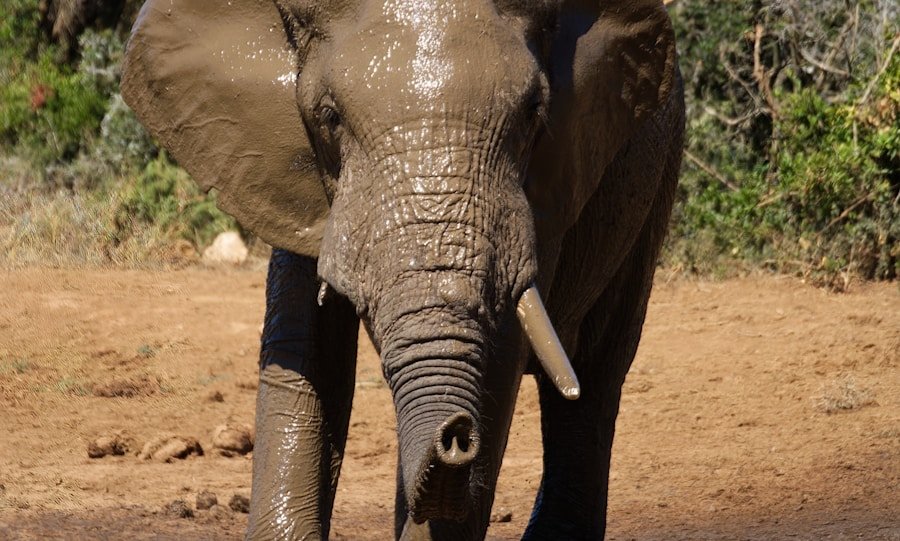The desert is a harsh and unforgiving environment, characterized by extreme temperatures, limited water, and sparse vegetation. The lack of rainfall and high evaporation rates make it difficult for plants to survive in this arid landscape. The soil is often sandy and nutrient-poor, further complicating the ability of plants to thrive. In addition, the intense sunlight and strong winds can further stress plant life in the desert. Despite these challenges, the desert is home to a variety of plant species that have evolved unique adaptations to survive in this harsh environment.
The desert cactus is one such plant that has successfully adapted to the extreme conditions of the desert. Its ability to thrive in such a challenging environment is a testament to its remarkable resilience and adaptability. The cactus has evolved a number of specialized features that allow it to survive in the desert, including its unique shape, water-storing capabilities, and specialized root systems. These adaptations enable the cactus to not only survive, but also thrive in the harsh desert environment.
Adaptations of the Desert Cactus
The desert cactus has a number of unique adaptations that allow it to survive in the harsh desert environment. One of the most notable features of the cactus is its distinctive shape, which is characterized by its thick, fleshy stems and spines. These features help to reduce water loss by minimizing the surface area exposed to the hot desert sun and by providing protection from herbivores. The spines also help to create a microclimate around the cactus, providing shade and reducing air movement, which helps to conserve water.
In addition to its unique shape, the cactus has also evolved specialized water-storing capabilities. The fleshy stems of the cactus are able to store large amounts of water, allowing it to survive long periods of drought. The cactus is also able to efficiently absorb and store water through its shallow, widespread root system. This allows the cactus to quickly take advantage of any rainfall or moisture in the soil, ensuring its survival in the arid desert environment.
Survival Strategies of the Desert Cactus
The survival strategies of the desert cactus are truly remarkable, allowing it to thrive in an environment where many other plants would struggle to survive. One of the key strategies employed by the cactus is its ability to minimize water loss. The thick, waxy coating on the stems of the cactus helps to reduce transpiration, while the spines provide shade and reduce air movement around the plant, further minimizing water loss. These adaptations allow the cactus to conserve precious water in the arid desert environment.
Another important survival strategy of the desert cactus is its ability to efficiently absorb and store water. The shallow, widespread root system of the cactus allows it to quickly take advantage of any moisture in the soil, while its fleshy stems are able to store large amounts of water for use during periods of drought. This allows the cactus to survive long periods without rainfall, ensuring its continued survival in the harsh desert environment.
Resilience in the Face of Drought
The resilience of the desert cactus in the face of drought is truly remarkable. Despite the extreme aridity of the desert environment, the cactus is able to survive and even thrive in these challenging conditions. Its ability to efficiently store and conserve water allows it to withstand long periods without rainfall, while its unique shape and specialized adaptations help to minimize water loss. These features enable the cactus to not only survive, but also continue to grow and reproduce in the harsh desert environment.
In addition to its remarkable ability to withstand drought, the desert cactus is also able to recover quickly from periods of water stress. When rainfall does occur, the cactus is able to rapidly absorb and store water, allowing it to quickly recover from drought conditions. This resilience allows the cactus to take advantage of any moisture in the soil, ensuring its continued survival in the arid desert environment.
Interactions with Wildlife
The desert cactus plays an important role in the ecosystem of the desert, providing food and shelter for a variety of wildlife species. The fleshy stems and fruits of the cactus are an important source of water and nutrients for many desert animals, including birds, insects, and mammals. In addition, the spines and dense structure of the cactus provide protection and shelter for small animals, helping them to escape from predators and extreme temperatures.
The flowers of the desert cactus also play an important role in supporting pollinators in the desert ecosystem. The brightly colored flowers attract a variety of insects, including bees and butterflies, which help to pollinate the cactus and other plants in the area. This pollination process is essential for the reproduction and survival of many plant species in the desert, making the cactus an important contributor to the overall biodiversity of the ecosystem.
Human Uses and Conservation Efforts
The desert cactus has been used by humans for thousands of years for a variety of purposes. Indigenous peoples have traditionally used various parts of the cactus for food, medicine, and building materials. The fleshy stems and fruits of the cactus are a valuable source of water and nutrients in arid regions, while its spines have been used for weaving baskets and other crafts. In addition, certain species of cactus have medicinal properties and have been used to treat a variety of ailments.
In recent years, there has been growing concern about the conservation of desert cacti due to habitat destruction and overharvesting. Many species of cacti are threatened by habitat loss as a result of urban development, agriculture, and mining activities. In addition, illegal collection and trade of cacti for ornamental purposes has further threatened their survival. Conservation efforts are underway to protect and preserve these important plants, including habitat restoration, protected areas, and education programs aimed at raising awareness about their importance.
The Future of the Desert Cactus
The future of the desert cactus is uncertain due to ongoing threats from habitat destruction, climate change, and overharvesting. As human activities continue to encroach on natural habitats, many species of cacti are at risk of extinction. Climate change is also expected to have a significant impact on desert ecosystems, potentially altering rainfall patterns and increasing temperatures, which could further stress these plants.
Despite these challenges, there is hope for the future of the desert cactus. Conservation efforts are underway to protect and preserve these important plants, including habitat restoration, protected areas, and education programs aimed at raising awareness about their importance. In addition, research into the biology and ecology of desert cacti is helping to better understand their needs and develop strategies for their conservation.
In conclusion, the desert cactus is a remarkable plant that has successfully adapted to survive in one of the harshest environments on Earth. Its unique shape, water-storing capabilities, and specialized adaptations allow it to thrive in the arid desert landscape. However, ongoing threats from habitat destruction, climate change, and overharvesting pose significant challenges to its survival. Conservation efforts are essential to protect and preserve these important plants for future generations. By working together to address these threats and raise awareness about their importance, we can ensure a bright future for the desert cactus and other plants that call this unique ecosystem home.








